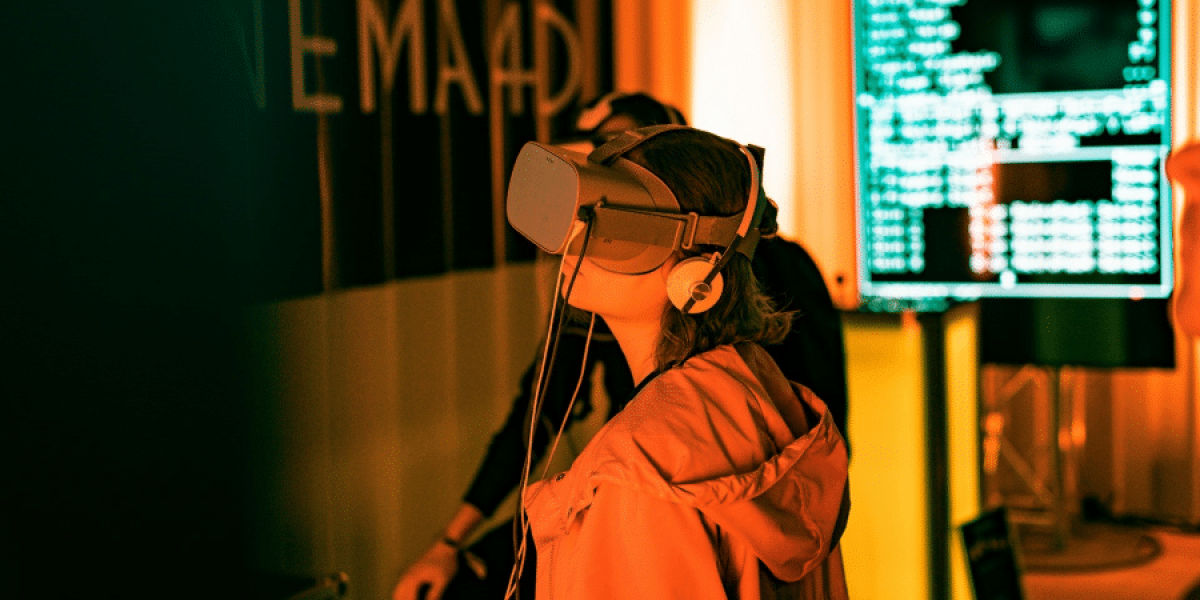Imagine a world where coding isn’t just about lines on a screen, but about stepping into the software you’re creating. That’s the potential of virtual reality (VR) in software development. It’s not just about fancy gaming headsets; VR is poised to become a powerful tool, transforming the way developers build and interact with software. Buckle up, because we’re about to dive into the exciting ways VR is pushing the boundaries of software development.
Beyond the Binary: Prototyping in a Whole New Dimension
Traditionally, software development starts with flat, two-dimensional prototypes. Imagine wireframes and mockups – they give you a basic idea, but they don’t capture the full user experience. VR changes the game. Developers can now create virtual prototypes, allowing users to interact with software in a simulated environment. Imagine testing a new app design in VR, where users can navigate the interface, feel the virtual buttons, and experience the software in a way that simply wasn’t possible before. This immersive prototyping allows for earlier and more accurate feedback, leading to better software from the get-go.
Bug Squashing in Wonderland: VR Debugging Like Never Before
Hunting down bugs can be a frustrating task for developers. Imagine sifting through lines of code, trying to pinpoint the gremlins causing glitches. VR can transform debugging into an almost-enjoyable experience (well, maybe enjoyable isn’t the right word, but definitely more engaging). Developers can step into the virtual world of their software and see the bugs firsthand. Imagine visualizing complex data structures and user interactions in VR, allowing developers to identify and squash bugs with greater speed and efficiency.
Collaboration Gets a Reality Check: Remote Teams, United by VR
The rise of remote work has changed the way software is built. Imagine developers scattered across the globe, collaborating on projects. VR can bridge the physical distance and create a sense of shared space. Developers can virtually co-locate in a shared VR workspace, interacting with code and design elements in real-time, as if they were sitting in the same room. This collaborative VR environment fosters better communication, problem-solving, and ultimately, a more streamlined development process.
Building Empathy Through Immersion: Designing for the User
Software development isn’t just about code; it’s about understanding the user. VR allows developers to step into the shoes of their users, experiencing the software from their perspective. Imagine a developer testing a VR training program by actually going through the training in VR. This immersive experience allows developers to identify potential pain points and design software that is not only functional but also intuitive and user-friendly.
VR Training on Steroids: Upskilling the Workforce
The software development landscape is constantly evolving, and keeping up with the latest trends can be challenging. VR can revolutionize software development training. Imagine immersive tutorials where developers can learn new skills in a virtual environment. VR training can be more engaging and interactive than traditional methods, leading to faster learning and improved skill retention.
The Challenges of a New Frontier: VR Development Isn’t Without Its Bumps
VR development is still a nascent field, and there are some hurdles to overcome:
- Cost: VR headsets and development tools can be expensive, making VR development less accessible to smaller companies and solo developers.
- Learning Curve: There’s a new set of skills and tools to master when developing for VR. Developers need to learn the ropes of VR development tools and best practices.
- Content Creation: Creating high-quality VR experiences requires specialized skills and resources. Developers might need to collaborate with 3D artists and VR designers to bring their software to life in VR.
The Future is Immersive: VR’s Potential to Reshape Software Development
Despite the challenges, the potential of VR in software development is undeniable. As VR technology becomes more affordable and accessible, we can expect to see even more innovative applications emerge. VR has the potential to:
- Shorten development cycles: Faster prototyping and debugging can lead to quicker software releases.
- Reduce development costs: Improved collaboration and communication can streamline development processes.
- Create more user-friendly software: Empathy-driven design through VR can lead to software that is intuitive and enjoyable to use.
So, the next time you hear about VR, don’t just think about games. Think about the future of software development. VR is poised to become a game-changer, pushing the boundaries of what’s possible and creating a new era of immersive software experiences. VR might not be mainstream in software development just yet, but it’s definitely a technology worth watching. The future of software development might be virtual, and that’s a pretty exciting prospect.







